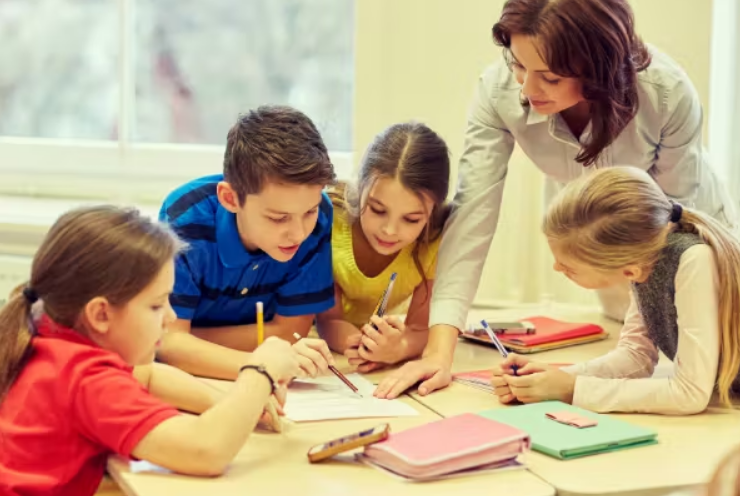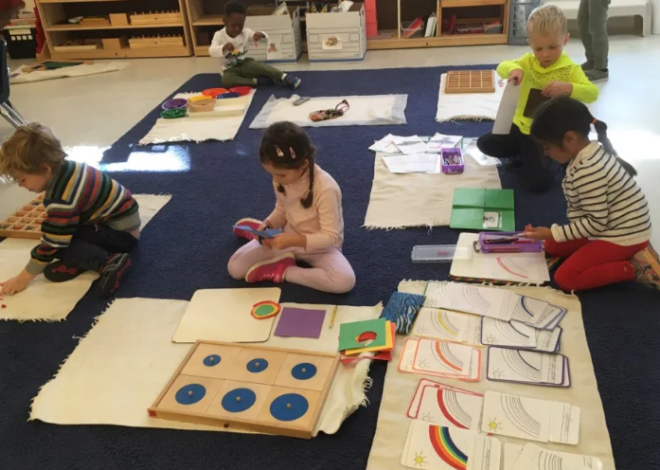
Facts Learning: The Endless Benefits of Collaboration in Education
In today's dynamic educational context, collaboration is more than just a tool; it is a potent catalyst, propelling students to academic heights that beyond traditional expectations. At its core, collaborative learning is a dynamic process in which ideas are exchanged cooperatively to modify the educational environment. This interchange creates a crucible in which collective wisdom emerges, much exceeding the sum of individual efforts. The mind-blowing benefits of collaboration emerge as students interact with their peers, forming a complex web of shared knowledge and experiences.
The transforming power of collaboration on critical thinking is obvious. Students are challenged to think beyond the boundaries of individual comprehension as a result of the interaction of many perspectives. Collaborative learning becomes a crucible for concept refining, encouraging a level of critical thinking that would be difficult to achieve alone. As students move through many points of view, they develop a sharp ability to examine information from multiple perspectives, boosting their ability to approach problems creatively and innovate.
Revolutionizing Learning Environments: Dynamic Benefits of Collaboration
Taking a trip into the dynamic atmosphere of collaborative learning is like joining an educational revolution that challenges and transforms traditional classrooms. The typical barriers to teacher-centered learning are broken down here, allowing for a more participative environment that boosts engagement and improves group dynamics. Collaboration transforms stagnant classrooms into thriving hubs of collective knowledge development.
Collaboration creates an engaging environment, which is an important aspect of this revolution. Traditional classrooms usually feature a one-way flow of information, with instructors delivering content to passive learners. In contrast, collaborative learning encourages students to actively participate in the exchange of ideas, questioning, discussing, and co-creating knowledge. This dynamic involvement not only captures attention, but it also gives students a sense of control over their learning experience.
Collaboration, as explained in this section, serves as an engagement amplifier. It taps into students' innate drive for social interaction, enabling them to actively contribute and learn from one another. Collaborative environments promote curiosity and intellectual discovery, whether through group discussions, team projects, or peer-to-peer learning. Students are drawn into the subject as learning becomes a collaborative and enjoyable experience.
Collaboration Unleashed: Real-World Applications and Benefits
The transformative impact of cooperation reaches well beyond the constraints of classroom walls, smoothly moving into the real world and bridging the vital gap between theoretical understanding and practical application. It is in this section that the narrative of collaboration as a dynamic preparing ground for students' future jobs is unfolded. It provides important insights into workplace readiness and professional development that transcend far beyond the realms of academics.
As we look deeper into the impact that collaboration has on career preparation, the capacity of collaboration to cultivate abilities that are needed for the workplace is the primary focus of our attention. Collaborative learning facilitates the development of abilities such as adaptability, effective communication, and the capacity to navigate difficult challenges. These are talents that are not only highly valued in the professional arena, but also very necessary. Students are able to get a hands-on grasp of how to negotiate the intricacies of real-world work situations when they actively engage with their peers to solve problems, make decisions, and carry out projects.
The Human Touch: Social and Emotional Benefits of Collaboration
Beyond intellectual benefits, collaboration adds a personal touch to education, serving as a catalyst for profound social and emotional development. This section invites you to explore the transforming power of cooperation on individuals, including its role in developing empathy, generating a sense of belonging, and contributing to emotional intelligence. The collaborative learning environment becomes a furnace for developing not only academic skills but also the key characteristics that build well-rounded individuals.
Collaboration's influence is centered on its ability to foster empathy among learners. As students actively connect with their classmates, sharing viewpoints and working toward common goals, they have a better understanding of their peers' thoughts and emotions. This empathic awareness extends beyond academic efforts, laying the groundwork for compassionate and courteous persons who value the variety of human experiences.
Collaboration produces a strong sense of belonging. In collaborative learning environments, students become integral members of a coherent community, breaking down the isolation that might accompany traditional learning approaches. The interchange of ideas, mutual support, and shared accomplishments help to foster a collective sense of purpose, resulting in an inclusive environment in which every voice is respected and every contribution is recognized.
Unlocking Potential: Maximizing the Benefits of Collaboration
As we move into the last portion, it reveals itself to be an all-encompassing handbook that provides essential insights to discover how to maximize the potential of collaboration in the educational setting. In this article, we will discuss successful ways for implementing collaborative learning, address any problems that may develop, and shed light on the symbiotic relationship that exists between technology and cooperation in contemporary educational settings. This investigation extends to gaining a knowledge of the dynamics of group cooperation, empowering educators through professional development, and giving a road map for making the most of the benefits that collaborative teaching approaches have to offer.
Recognizing that a well-structured approach is essential to achieving success, effective ways for implementing collaborative learning are given the spotlight as the primary focus. In order to accomplish this, it is necessary to establish a harmonious setting that stimulates open communication, promotes active participation, and establishes distinct objectives for undertakings that include collaboration. Strategies also include the fostering of different group interactions, which enables students to capitalize on each other's talents, so enriching the overall learning experience. This is one of the ways that strategies are implemented.
Conclusion:
Collaboration is not just an educational strategy; it is a transformative force that shapes individuals into adept problem-solvers, effective communicators, and globally conscious citizens. As we come to the end of our investigation into the mind-blowing benefits of collaboration in learning, it becomes apparent that collaboration is not just an educational strategy. Accept the concept of collaborative learning, discover the advantages it offers, and watch as the educational landscape transforms into a dynamic environment in which every learner can flourish. Welcoming you to the era in which collaboration is not merely a method, but rather the key to unlocking the full potential of education, we wish you a warm welcome.



